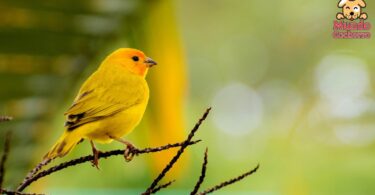Known for their charming plumage and playful nature, budgies are also famous for their distinctive vocalizations. These small birds are capable of producing a wide variety of sounds, from melodious trills to high-pitched chirps. Next, we’ll explore the different types of budgie songs and what they mean to these cheerful winged companions.
Indice
Types of parakeet songs
- Trills and chirps:
One of the most common types of parakeet songs are trills and warbles. These are soft, melodious vocalizations that budgerigars emit when they are happy, relaxed or socializing with other birds. Trills can be a sign of well-being and happiness in a budgie’s environment.
- Chirps and chirps:
Chirps and chirps are short, high-pitched sounds that budgerigars often make to attract attention or express emotion. These sounds may indicate curiosity, excitement or even frustration, depending on the context in which they occur.
- Whistling and clicking noises:
Budgies are capable of producing a variety of whistling and clicking noises using their tongue and beak. These sounds can be a form of communication between budgies, as well as a way of interacting with their owners or their environment.
Socialization
- Repetition of words or phrases:
Like parrots, budgerigars have the ability to imitate human words and phrases with proper training. Some budgies can learn to repeat simple words or even short conversations, which adds a unique and entertaining element to their vocal repertoire.
- Calling and contact songs:
Budgerigars often emit call and contact songs to communicate with other birds in their environment. These sounds can be used to keep in contact with their flock, call other parakeets or alert them to possible dangers.
- Learning songs:
Budgies, especially young budgies, can make a variety of sounds while they are in the process of vocal learning. These sounds may include attempts to imitate other birds, practice new sounds, or simply experiment with their vocal ability.
- Courtship vocalizations:
During courtship and mating, budgerigars may make specific vocalizations to attract potential mates. These courtship songs are usually more elaborate and melodious than everyday vocalizations and may include long and varied trills.
- Alarm calls:
When budgerigars sense a threat or feel alarmed, they may emit alarm calls to alert other members of their flock. These vocalizations are often high-pitched and discordant, and may indicate the presence of predators or other potential dangers.
In conclusion, budgerigars are capable of producing a wide range of vocalizations that serve a variety of functions in their daily lives. From cheerful trills to alarm calls, each type of song has its own meaning and purpose in the communication of these charming birds. By observing and listening carefully to our feathered friends, we can better understand their behavior and strengthen our bond with them.
Image courtesy of https://pixabay.com, all rights reserved.







